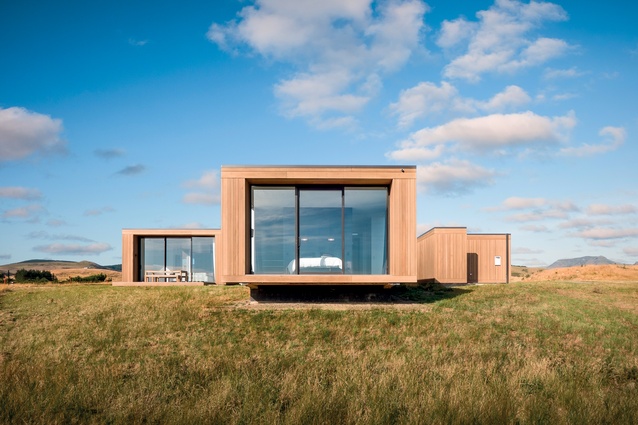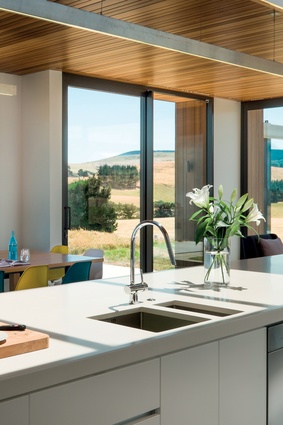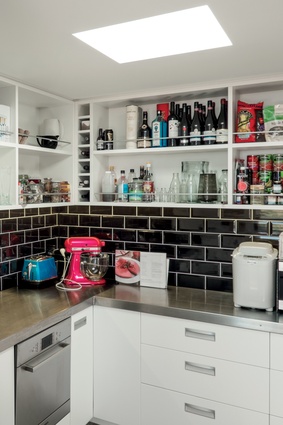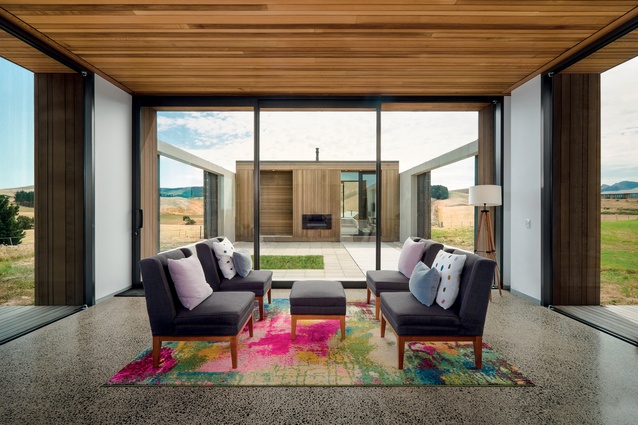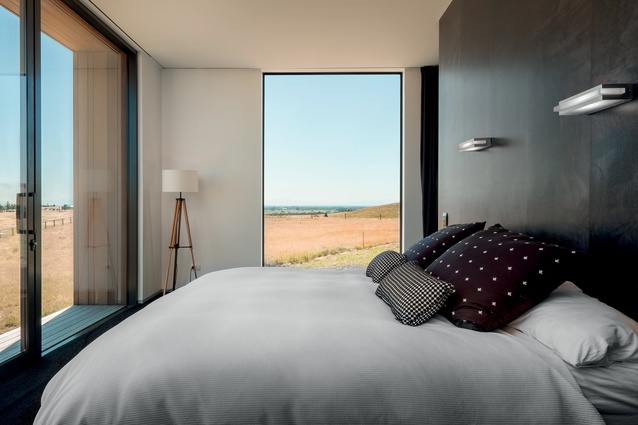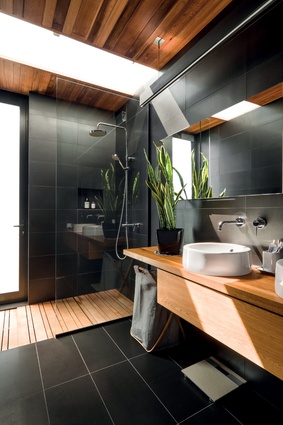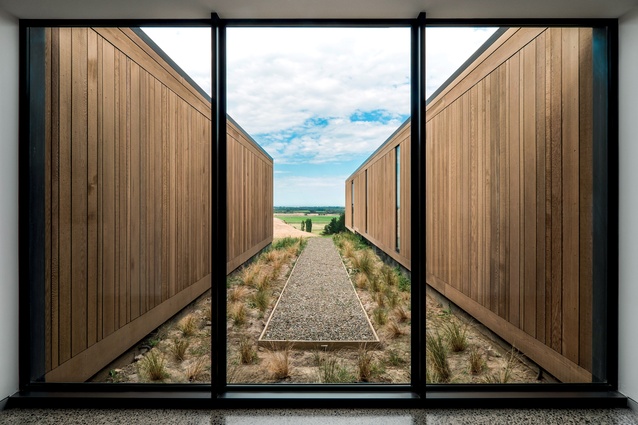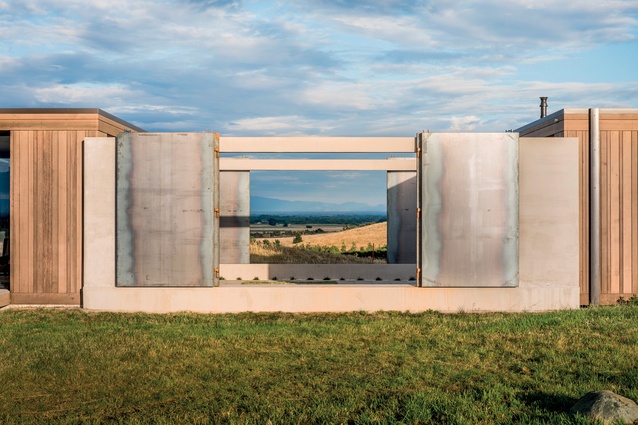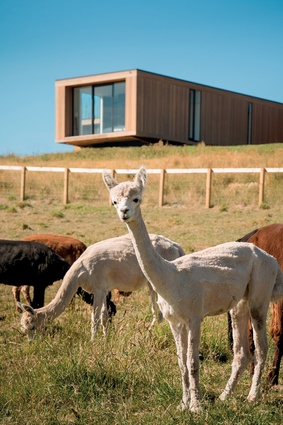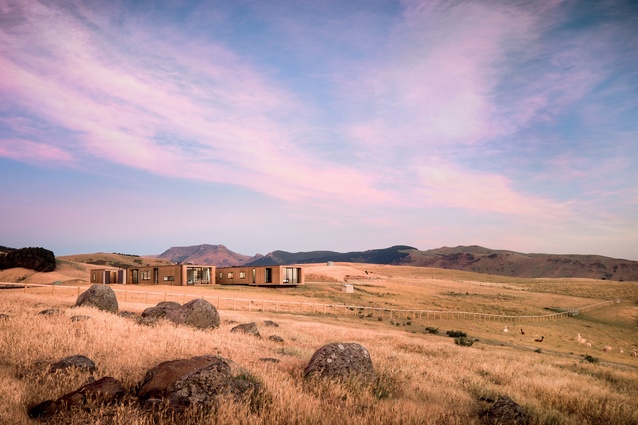Houses revisited: Sliding house
This hilltop family home is nestled between the Port Hills, Lake Ellesmere (Te Waihopu) and the Canterbury Plains. First published in 2017.
A young couple and their children have built a stunning home on a hilltop surrounded by grassland and llamas. Dalman Architecture’s design for the family captures an assortment of incredible views of Canterbury that can be seen in all weathers, from snow to hot sun.
“Wherever you go in the house, you can enjoy a different view; the Canterbury Plains offers a different experience from the Port Hills,” explains the owner. In one direction, Cooper’s Knob, the highest point in the Port Hills, appears. In the other direction sits Lake Ellesmere. Fortunately, Sliding House is located far enough away to have avoided the recent bushfires in the area.
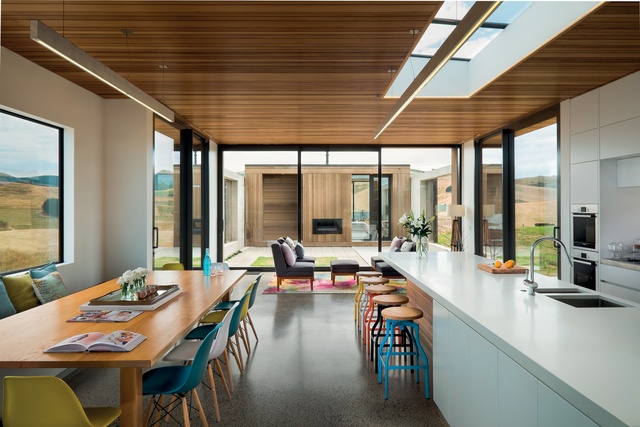
Dalman Architecture’s concept for Sliding House arose from an idea about children’s colourful plastic blocks laid out parallel but sliding against one another, backwards and forwards. The result is an interesting arrangement of three wings that work to protect the interior from prevailing winds coming up the hill, while maximising the views and the light, which seems to seep through the interior in a really lovely way.
A moss-lined path is an invitation to enter the house through a corridor that then opens up into interesting, almost stand-alone, spaces. A bedroom near the entrance can work independently for a boarder or an Airbnb guest. A large family room, combined with office, captures and contains the joyful chaos of children’s play.

Across the corridor, an intimate master bedroom contrasts the whiteness of the rest of the house in being decorated in black, which helps confine the view. This is a relaxing space to rest in bed with the natural landscape acting like a real live painting, especially when the sun goes down over Lake Ellesmere.
This view will soon be enjoyed from a cantilevered lap pool, to be built into the space between the wings. In the carpark, a ground-source heat pump system feeds the underfloor heating, heats the water and, eventually, the pool too.
At the far end of the corridor, the house opens into two living spaces. Behind a walled fireplace and room divide, an intimate sunken living area has low windows to isolate framed views of the Plains seen from the comfort of the sofas. Next door, the kitchen and dining area can accommodate large groups, serviced by a scullery.

In this area, seating overlooks the courtyard, which can be opened up to the views via two rusty-steel gates, engineered to factor in high winds. An outdoor wall-mounted fireplace warms the courtyard on cooler nights and, behind this wall, a separate bedroom, kitchenette and bathroom allow visitors to maintain some independence.
“We didn’t want the design to be over-engineered,” expains the owner. “We wanted the building to blend into the landscape, for the grass to grow up around it and for the cows to wander up near the house to graze.”
MATERIAL SELECTOR

Richard Dalman discusses his firm’s design for Sliding House.
What are the advantages of building in a scullery?
It allows for the main food preparation and washing up to be undertaken ‘out the back’, where the associated mess is not seen. Cooking and plating can be done in front of guests in the main kitchen space. A scullery can afford to have open shelves for storage of cooking ingredients, pots, pans and large appliances; and a large butler’s sink that can take large pots. You can keep your rubbish and recycling bins in this area, too. Sometimes a scullery can have separate access to the garage for easy delivery of groceries from the car.
Your material palette is very in keeping with the stunning rural environment around the house; what was your thinking?
The main material – cedar cladding – has been left to weather and blend naturally in to the landscape, which changes colour and character over the seasons. The house will end up blending in seamlessly to the hillscape.
Click here to see more Houses Revisited. And sign up to our email newsletters to receive Houses Revisited straight to your inbox.
Note: These are stories from our archives and, since the time of writing, some details may have changed including names, personnel of specific firms, registration status, etc.

